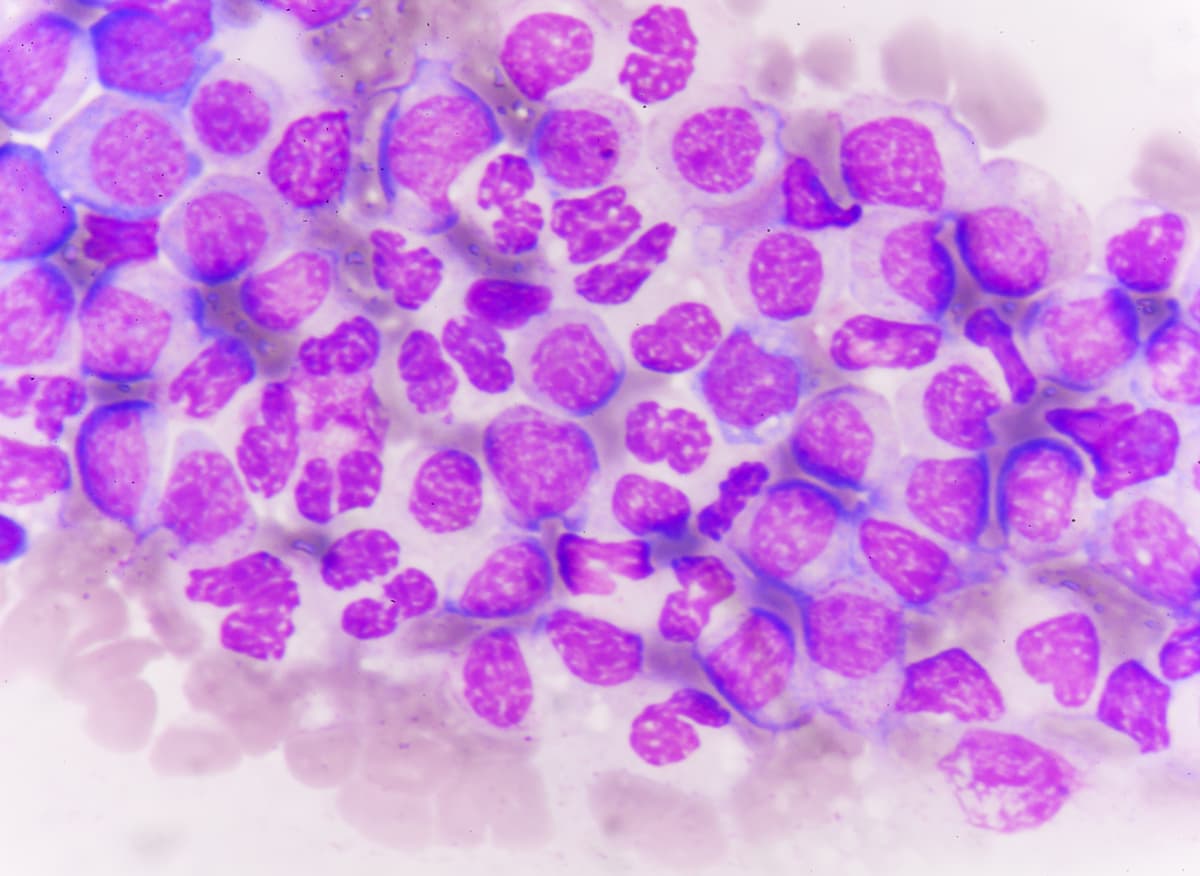FDA Grants SLS009 Rare Pediatric Disease Designation in Pediatric AML
SLS009 is a highly selective CDK9 inhibitor that is being studied in an ongoing phase 1/2 trial for patients with hematologic malignancies.
SLS009 is a highly selective CDK9 inhibitor that is being studied in an ongoing phase 1/2 trial for patients with hematologic malignancies.

The FDA has granted SLS009 a rare pediatric disease designation for the treatment of pediatric patients with acute myeloid leukemia (AML), according to a news release by the agent’s developer, SELLAS Life Sciences Group, Inc.1
“Receiving our second Rare Pediatric Disease Designation, following pediatric acute lymphoblastic leukemia last month, is another acknowledgment of SLS009’s novel transformational treatment potential to improve the lives of patients, including children with AML,” Angelos Stergiou, MD, ScD, hc, president and chief executive officer of SELLAS stated in the news release. “This designation reinforces our dedication to addressing the urgent needs of children with AML, including those with treatment-resistant mutations, highlighting the promise of SLS009 to offer the specialized care and support they require, especially considering the limited treatment options for rare pediatric diseases. We look forward to continued SLS009 development and enrolling pediatric AML patients in our phase 2 clinical trial.”
AML is the second most common hematologic cancer in pediatric patients who also have a poor prognosis compared with other pediatric cancers.2,3
SLS009, formally known as GFH009, is a highly selective CDK9 inhibitor; the agent previously has been granted both orphan drug and fast track status by the FDA.
In a nonrandomized, multicenter, open-label, ongoing phase 1/2 trial (NCT04588922), investigators are evaluating the efficacy and safety of SLS009 in patients with hematologic malignancies in 2 dose-escalation groups: patients with relapsed/refractory AML (group 1) and relapsed/refractory lymphoma/chronic lymphocytic leukemia/small lymphocytic lymphoma (group 2).4 Additionally, an expansion cohort, group 3, will evaluate SLS009 in combination with venetoclax (Venclexta) and azacitidine in patients with relapsed/refractory AML who have relapsed or are refractory to venetoclax-based regimens. In group 3, there are 3 cohorts aimed to assess the different dose levels of SLS009 (45 mg weekly, 60 mg weekly, and 30 mg twice weekly), one enrolling patients with relapsed/refractory ASXL1-mutant AML, and 1 with myelodysplasia-related mutations beyond ASXL1.
To be eligible for enrollment, patients must be either at least 18 years old or, for pediatric patients, be between 12 and 18 years old with 40 kg or higher of body mass; have cytological or histologically confirmed relapsed/refractory hematologic cancers; have a total bilirubin within 1.5 x upper limit of normal (ULN) except for patients with Gilbert’s syndrome, who are included if the total bilirubin is less than 3 x ULN or if the direct bilirubin is less than 1.5 x ULN; measured serum creatinine clearance at least 60 mL/min for pediatric patients; amylase level within 1.5 x ULN; stable electrolytes and uric acid level for at least 3 days before first SLS009 dose; and effective use of contraception for female patients with childbearing potential level.
Those with bulky disease (≥10 cm) who require cytoreductive therapy, have symptomatic central nervous system metastases or primary lymphoma, severe cardiovascular disease within 6 months of study entry, hypereosinophilic syndrome, a concurrent malignancy within 5 years and 2 years for those with AML other than select cancers, active hepatitis B or hepatitis C virus infection, a history of HIV infection or HIV positive at screening, and those taking select medications.
The coprimary end points are safety and tolerability; secondary outcome measures are pharmacokinetics and efficacy, specifically overall response rate, duration of response, progression-free survival, and overall survival.
References
- SELLAS Announces U.S. FDA Rare Pediatric Disease Designation (RPDD) Granted to SLS009 for the Treatment of Pediatric Acute Myeloid Leukemia. SELLAS Life Sciences Group, Inc. July 16, 2024. Accessed July 17, 2024. https://shorturl.at/tytSr
- SELLAS receives FDA orphan drug designation for SLS009 for treatment of acute myeloid leukemia. News release. SELLAS. October 11, 2023. Accessed July 19, 2024. https://shorturl.at/xhojs
- SELLAS Life Sciences receives FDA fast track designation for SLS009 for treatment of relapsed/refractory acute myeloid leukemia and provides updated data for phase 2a study of SLS009 in relapsed/refractory acute myeloid leukemia patients. News release. SELLAS Life Sciences. January 9, 2024. Accessed July 18, 2024. http://tinyurl.com/38rre4hh
- Study of SLS009 (Formerly GFH009) a potent highly selective CDK9 inhibitor in patients with hematologic malignancies. ClinicalTrials.gov. Last Updated June 14, 2024. Accessed July 18, 2024. https://shorturl.at/aEHdD